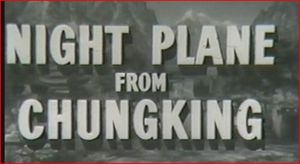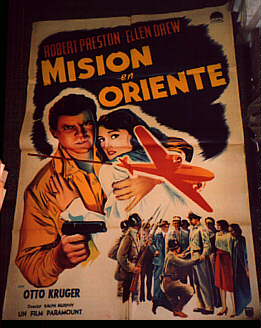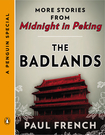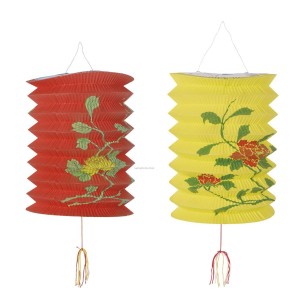Posted: June 18th, 2013 | No Comments »
Friday 21st June 2013
7 pm for 7.30pm start
RAS Library at the Sino-British College
1195 Fuxing Zhong Lu
PROFESSOR BENJAMIN A ELMAN on
19th Century Science in Shanghai

After the Taipings were defeated, the weakened Qing dynasty and its literati-officials faced up to the new technological requirements to survive in a world filled with menacing, quickly industrializing nations. Literati, especially those in the treaty port of Shanghai who had worked with the Protestant missions in the 1850s, began in the 1860s to move from their London Missionary Society positions to teaching and translating the natural sciences for the government’s new westernizing institutions such as the Jiangnan Arsenal in Shanghai. They built bridges between post-industrial revolution science and traditional Chinese natural studies.
In the 1850s, new Protestant journals such as the Shanghae Serial (Liuhe congtan) introduced new fields in the Western sciences in Chinese, rigorously categorizing them under the general rubric of “learning based on the investigation of things and the extension of knowledge” (gezhi xue). The traditional literati notion of investigating things (gewu)moved from representing a methodological universal for classical learning, encompassing natural studies, to designating a specific domain of knowledge within the natural sciences.
Through the translation work of Alexander Wylie, Li Shanlan, and others involved in the Shanghae Serial, the investigation of things demarcated the new Western natural sciences. A scientist was now called “someone who investigates things and extends knowledge” (gezhi shi or gewu jia). The British Royal Society was translated in the Shanghae Serial as the “Public Association for Investigating Things and Extending Knowledge” (Gezhi gonghui), while the French Academy of Science was called the “French State School for Investigating Things and Extending Knowledge” (Falangxi gezhi taixue) in Chinese.
Â
After the Shanghae Serial stopped publication in 1858, the first issue of the Shanghai-based Scientific and Industrial Magazine appeared in February 1876. There were three breaks between the three series of publications before it finally ceased in 1892. Volumes 1-2 appeared in 1876-77, volumes 3-4 in 1880-81, both as monthlies, and volumes 5-7 in 1890-92 (published as a quarterly).
Benjamin Elman is Gordon Wu ’58 Professor of Chinese Studies, professor of East Asian Studies and History, and chair of the Department of East Asian Studies at Princeton University. He works at the intersection of several fields including history, philosophy, literature, religion, economics, politics, and science. His ongoing interest is in rethinking how the history of East Asia has been told in the West as well as in China, Japan, and Korea.
Professor Elman is currently studying cultural interactions in East Asia during the 18th century, in particular the impact of Chinese classical learning, medicine, and natural studies on Tokugawa, Japan, and Choson, Korea. The editor, author, or coauthor of numerous publications, Elman’s recent books include Classicism, Examinations, and Cultural History (2010); A Cultural History of Modern Science in China (2009); and a textbook for world history, Worlds Together, Worlds Apart: A History of the World from the Beginnings of Humankind to the Present (2008). Elman has also been effective in building relationships between Princeton University and institutions in East Asia, and has taught extensively at Fudan University in Shanghai and the University of Tokyo.
RSVP: to RAS Bookings at: bookings@royalasiaticsociety.org.cn
 Â
ENTRANCE: 30 rmb (RAS members) and 80 rmb (guests). Includes a glass of wine or soft drink. Priority for RAS members. Those unable to make the donation but wishing to attend may contact us for exemption.
Â
MEMBERSHIP applications and membership renewals will be available at this event.
Â
RAS MONOGRAPHS – Series 1 & 2 will be available for sale at this event. 100 rmb each (cash sale only)
Â
WEBSITE: www.royalasiaticsociety.org.cn
Posted: June 17th, 2013 | No Comments »
Talking of Rana Mitter’s new book on China during the war yesterday I thought I’d mention the almost forgotten 1943 wartime propaganda movie Night Plane From Chungking. A quite interesting B-movie that was essentially a remake of Josef von Strernberg’s much better Shanghai Express (1932 – with Dietrich, Anna May Wong etc etc). Night Plane has no great stars or particular talent attached to it though there are plenty of dodgy White Russians, duplicitous characters etc. A bit more on it here.



Posted: June 16th, 2013 | No Comments »
Rana Mitter’s long awaited history of the Sino-Japanese War and Chungking….and an interview in the China Daily on the book…

Different countries give different opening dates for the period of the Second World War, but perhaps the most compelling is 1937, when the ‘Marco Polo Bridge Incident’ plunged China and Japan into a conflict of extraordinary duration and ferocity – a war which would result in many millions of deaths and completely reshape East Asia in ways which we continue to confront today.
With great vividness and narrative drive Rana Mitter’s new book draws on a huge range of new sources to recreate this terrible conflict. He writes both about the major leaders (Chiang Kaishek, Mao Zedong and Wang Jingwei) and about the ordinary people swept up by terrible times. Mitter puts at the heart of our understanding of the Second World War that it was Japan’s failure to defeat China which was the key dynamic for what happened in Asia.
Posted: June 15th, 2013 | No Comments »
 My short new e-book The Badlands: Decadent Playground of Old Peking is out now and it’s just US$3.99 in the USA (here) and 0.99p in the UK (here). And here, courtesy of Penguin Australia’s web site, is the opening introduction to The Badlands so you can get a free taste and a little sample of the great graphics, courtesy of Jason Pym, below. BTW: a limited edition hardback of the book (the lovely cover below) is out now in China, Australia and Hong Kong while the e-book is available in Oz and will be available in UK, USA and everywhere else in May…
My short new e-book The Badlands: Decadent Playground of Old Peking is out now and it’s just US$3.99 in the USA (here) and 0.99p in the UK (here). And here, courtesy of Penguin Australia’s web site, is the opening introduction to The Badlands so you can get a free taste and a little sample of the great graphics, courtesy of Jason Pym, below. BTW: a limited edition hardback of the book (the lovely cover below) is out now in China, Australia and Hong Kong while the e-book is available in Oz and will be available in UK, USA and everywhere else in May…

Posted: June 13th, 2013 | No Comments »
Interesting new book out from Gloria Davies on Lu Xun….good review from Jonathan Mirsky in June’s Literary Review…

Widely recognized as modern China’s preeminent man of letters, Lu Xun (1881–1936) is revered as the voice of a nation’s conscience, a writer comparable to Shakespeare and Tolstoy in stature and influence. Gloria Davies’s portrait now gives readers a better sense of this influential author by situating the man Mao Zedong hailed as “the sage of modern China” in his turbulent time and place. In Davies’s vivid rendering, we encounter a writer passionately engaged with the heady arguments and intrigues of a country on the eve of revolution. She traces political tensions in Lu Xun’s works which reflect the larger conflict in modern Chinese thought between egalitarian and authoritarian impulses. During the last phase of Lu Xun’s career, the so-called “years on the left,” we see how fiercely he defended a literature in which the people would speak for themselves, and we come to understand why Lu Xun continues to inspire the debates shaping China today. Although Lu Xun was never a Communist, his legacy was fully enlisted to support the Party in the decades following his death. Far from the apologist of political violence portrayed by Maoist interpreters, however, Lu Xun emerges here as an energetic opponent of despotism, a humanist for whom empathy, not ideological zeal, was the key to achieving revolutionary ends. Limned with precision and insight, Lu Xun’s Revolution is a major contribution to the ongoing reappraisal of this foundational figure.
Posted: June 11th, 2013 | No Comments »
Chinese lanterns were quite the thing in the late Victorian and Edwardian period in England it seems. They pop up as nice props on TV shows (movie wise Chinese lanterns in 1890s Paris pop up to liven up George’s garret in Bel Ami, which was otherwise a snooze-fest) but I’ve been coming across a few references in literature recently (not including that Charles Dickens at his home at Gads Hill in Kent would hang Chinese lanterns in the conservatory and apparently sit around of an evening admiring them). Here’s a couple, but if anyone has any others do let me know please?
George du Maurier’s Trilby (1894) has a scene with poor Trilby herself and her gang of artist acolytes celebrating Christmas in Paris in some Bohemian poverty but with some lovely decorations – “And suddenly the studio, which had been so silent, dark, and dull, with Taffy and Little Billee sitting hopeless and despondent round the stove, became a scene of the noisiest, busiest, and cheerfullest animation. The three big lamps were lit, and all the Chinese lanterns”.
And then GK Chesterton’s tale of wild anarchists threatening London, The Man Who Was Thursday – Chesterton has the invented Lodon suburb of Saffron Park which he describes in some details: “More especially this attractive unreality fell upon it about nightfall, when the extravagant roofs were dark against the afterglow and the whole insane village seemed as separate as a drifting cloud. This again was more strongly true of the many nights of local festivity, when the little gardens were often illuminated, and the big Chinese lanterns glowed in the dwarfish trees like some fierce and monstrous fruit.” Those lanterns keep returning, “He thought of all the human things in his story—of the Chinese lanterns in Saffron Park, of the girl’s red hair in the garden, of the honest, beer-swilling sailors down by the dock, of his loyal companions standing by.”
The might DH Lawrence had a few Chinese lanterns around – in Women in Love Chinese lanterns appear decorated with crabs and seaweed as well as flights of storks etc with Ursula and Gudrun having different lanterns with different symbolism.

Posted: June 10th, 2013 | No Comments »
I’ve noticed a lot of watch dealers in Shanghai selling Movado watches lately and, of course, they’re nothing new. Here’s an ad for Movado and their distributor Boyes, Bassett & Co on the Nanking Road (Nanjing Road) featuring a lovely little travel clock, the “Pullman”….

Posted: June 9th, 2013 | No Comments »
Advance notice of what should be an excellent RAS Shanghai event…
The Chinese Taste in Eighteenth-Century England – David Porter
Eighteenth-century consumers in Britain, living in an increasingly globalized world, were infatuated with exotic Chinese and Chinese-styled goods, art and decorative objects. However, they were also often troubled by the alien aesthetic sensibility these goods embodied. This ambivalence figures centrally in the period’s experience of China and of contact with foreign countries and cultures more generally. In the recent book from which this talk is adapted, David Porter analyzes the processes by which Chinese aesthetic ideas were assimilated within English culture. Through case studies of individual figures, including William Hogarth and Horace Walpole and broader reflections on cross-cultural interaction, he develops new interpretations of eighteenth-century ideas of luxury, consumption, gender, taste and aesthetic nationalism.
David Porter teaches at the University of Michigan, where he is Professor of English and Comparative Literature as well as Faculty Associate at the Center for Chinese Studies. A graduate of Cornell, Cambridge, and Stanford Universities, he is the author of two books exploring English and European responses to Chinese culture in the 17th and 18th centuries. The first, Ideographia: The Chinese Cipher in Early Modern Europe, was published by Stanford in 2001. The second, The Chinese Taste in Eighteenth Century England, came out with Cambridge in 2010. He is currently working on a new book comparing the literary cultures of China and England during the 17th and 18th centuries.
Tuesday 18th June 2013 – 7pm for 7.30pm start
The Tavern, Radisson Plaza Xingguo Hotel, 78 Xing Guo Road, Shanghai RAS Members 80 RMB – Non Members 130 RMB











